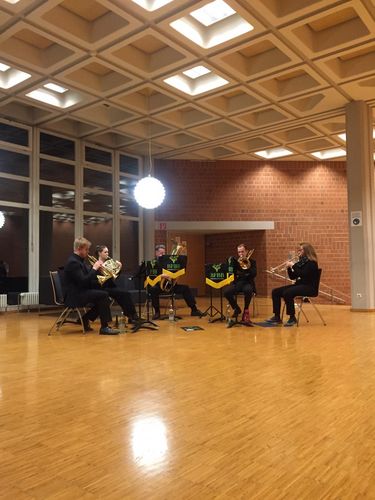Brass music associations shape the musical life in many rural areas of Germany. After the pandemic-related lockdowns, restrictions, and resulting uncertainties, there is great joy among the music associations, according to our impression from the MOkuB research project, to be able to resume their music association activities again. They are rehearsing, conducting youth work, celebrating festivals, making trips, and maintaining traditions. However, the COVID-19 pandemic still continues to shape the association life through cases of illness or cancellations of events. In addition, music associations have long been facing other challenges, such as finding conductors and instrumental teachers. Attracting new members is also difficult for some associations. All these challenges are faced by music associations partly with limited financial resources, with which they carry out their daily work, which is an additional challenge. To overcome these challenges, concepts are developed, ideas are implemented, and new formats of musical and social encounter are tested. The conference "Land - Music - Association", framed with musical contributions, took a multiperspective look at this multifaceted and lively music association scene.
One area that several conference contributions can be assigned to is professionalism. For example, there was a panel discussion on the professionalization of the music association scene in universities, in which Professor Carmen Heß, Professor of Instrumental and Singing Pedagogy, Noah Ruoff, student at the University of Music in Freiburg and leader of a music association, Professor Hermann Pallhuber, Head of the Blasorchesterleitung degree program, and Christoph Karle, Director of the BDB Music Academy, shared their perspectives on the connection between music universities and music associations. In addition, as part of the conference, there was a workshop on instrumentation and conductorship for expressing atmospheres in brass music by composer and conductor Bert Appermont.
In addition, there were also numerous contributions that shed light on the theme of cooperation. For example, there was a discussion on the cooperation between music schools and music associations in the Flandern region (Netherlands), thus providing an international perspective on amateur music with brass instruments by Lierin Buelens and Thomas Geudens. Research results from the MOkuB project on the perspectives of music association members on brass classes were also presented. In addition, Cesar Masano Cavaloti reported on the DaCapo cooperation project, which involves music associations, music schools, and general education schools.
Under the theme of participation, several contributions were gathered. For example, Professor Andreas Lehmann-Wermser and Julius Kopp from the Peripheral Regions, Participation and School (PReTuS) research project gave a lecture on the fit between students and music clubs in the Harz region. Chris David Westover-Munoz (USA) also provided an international perspective, advocating for a consideration of music clubs as social aesthetic practices.
Insights into the MOkuB research project were also provided under the theme of intergenerationality. However, other perspectives were also opened up. For example, Ute Konrad showed how a music club works with a nursing and residential facility and how this enables cultural participation despite vulnerability. Professor Andreas C. Lehmann from the "Agents, their experiences and connections as success factors for (cultural) participation in peripheral regions" (KuBiNetze) project and Julia Gehring identified what motivates adults to participate in a church brass choir and provided important guidelines for designing ensemble work for the adult generation.
Overall, the hybrid conference was rich in stimulating discussions, thought-provoking ideas and ideas for further work in practice and science. Further information on the research project and access to the published contributions can be found here
